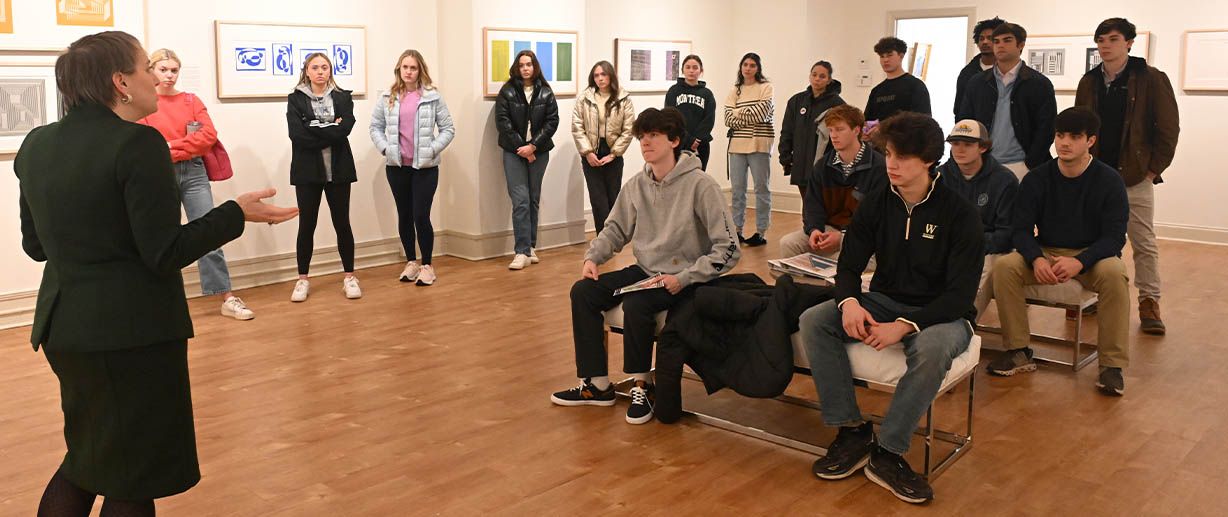Dr. Philip Dorroll is leading 20 Wofford students on a deep dive into Spartanburg’s past.
Dorroll, associate professor of religion, is teaching the Interim course “Stories of Spartanburg.” His objective: to teach students Spartanburg’s history by approaching the city and surrounding areas as a field site for them to explore and gain a better understanding of the community.
“When you’re a student in college, you tend to think of the community as an accessory to your college life,” says Dorroll. “Spartanburg has a rich history and Wofford is a big part of that. I’ve developed a much deeper appreciation for Spartanburg just from teaching this course and I hope students do the same. Maybe someday they’ll take what they’ve learned and use it to study the history of other communities they might be part of.”
Dorroll put together a comprehensive schedule for the course that includes workshops, lectures, site visits, fieldwork days and classroom discussions.
Students viewed the works of talented Southern artists at The Johnson Collection Gallery and AC Hotel in downtown Spartanburg. They stopped by St. Nicholas Greek Orthodox Church and Spartanburg’s Headquarters Library, where they spent some time with local historian Brad Steinecke.
Students also read “South of Main” by Beatrice Hill and Brenda Lee. The book is a collection of stories that chronicle the history and culture of Spartanburg’s Southside neighborhood.
To reinforce their learning, Dorroll is requiring each student to describe their experiences and highlight key takeaways via (at least 10) blog posts on the Moodle platform.
“I think one of the most interesting things we’ve done so far was to examine an article about (the college’s founder) Benjamin Wofford’s mother that explains how God brought her to Spartanburg,” says Mia Leon ’27, a first-year Spanish and international studies double major from Louisville, Kentucky. “I did a lot of writing in high school, so one of my favorite parts of the course is the blogging.”
Alison Davis ’27, a first-year undeclared major also from Louisville, says she decided to take the course because she “didn’t want to just sit in a classroom” during Interim.
“Going around town and seeing, touching and experiencing the history of Spartanburg is something that will stick with me,” Davis says. “What drew me to this course was the opportunity for experiential learning and it definitely delivered.”
Kate Mullee ’27, a first-year undeclared major from Raleigh, North Carolina, echoes Davis’ appreciation for the opportunities to get out into the community and praises Dorroll for his approach.
“I think he has done an amazing job in making this challenging but also fun,” Mullee says. “I barely knew where downtown Spartanburg was before taking this course. I really have learned a lot.”
Dorroll says while teaching the course, he came across an 1853 letter written in Arabic by Omar ibn Said, a West African Muslim Scholar who escaped slavery in Charleston, South Carolina. The letter is housed at the Chapman Cultural Center. Dorroll has incorporated studies of the letter and author in his regular coursework.
“Far and away, this is one of the most valuable pieces of religious history that I have ever seen, and it’s right here in Spartanburg,” Dorroll says.
